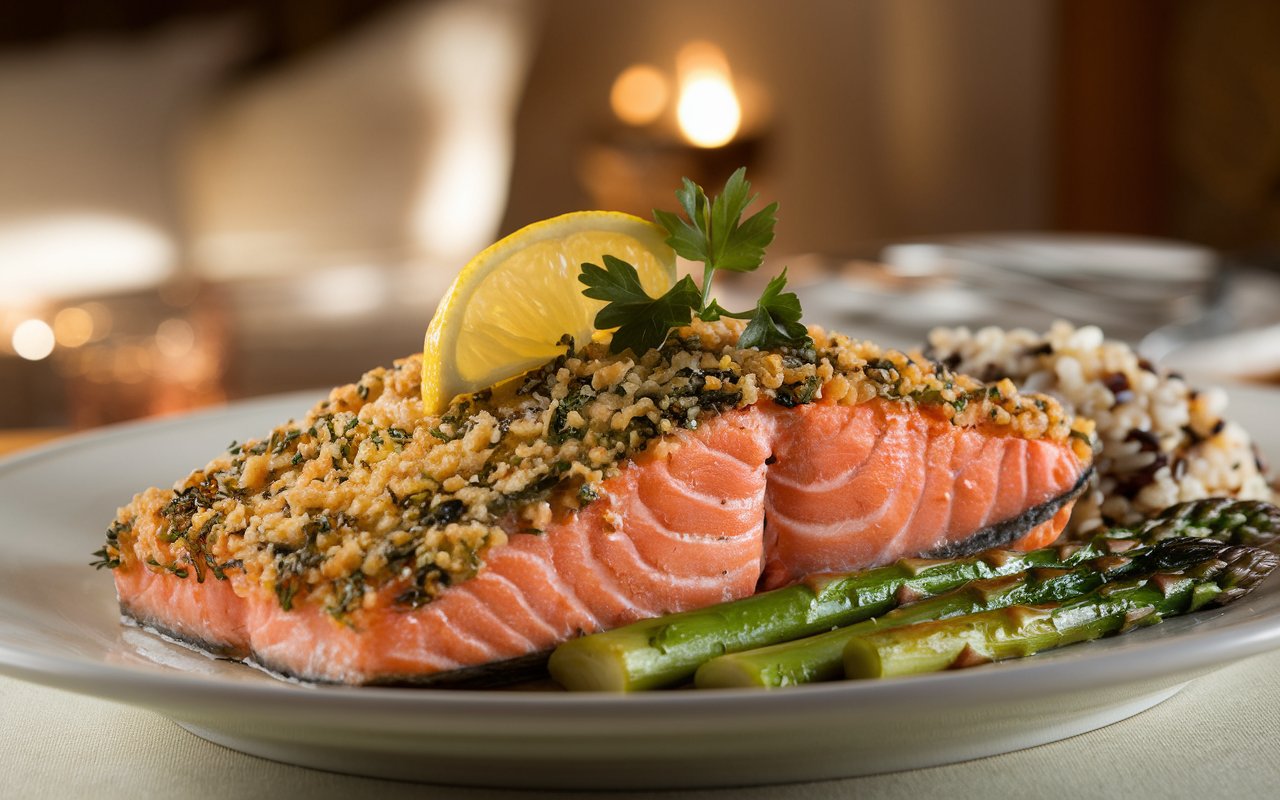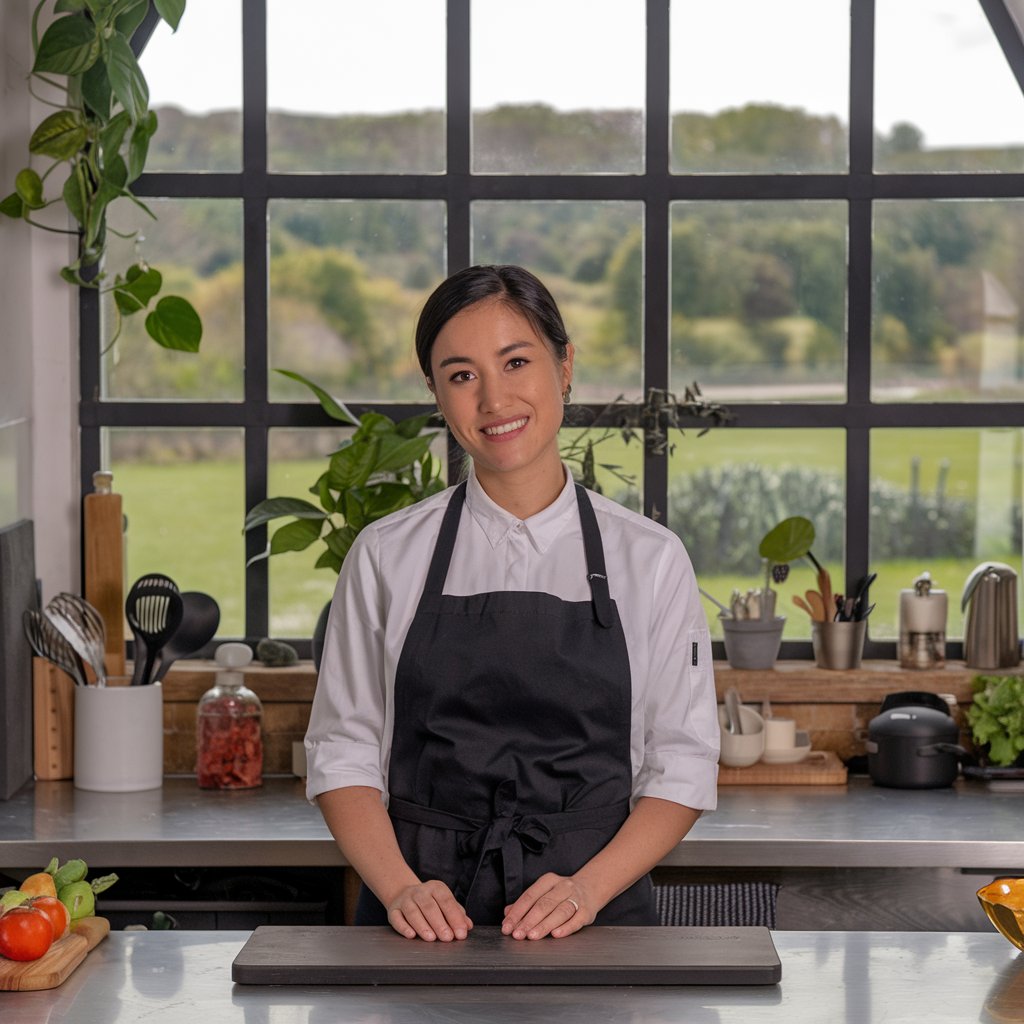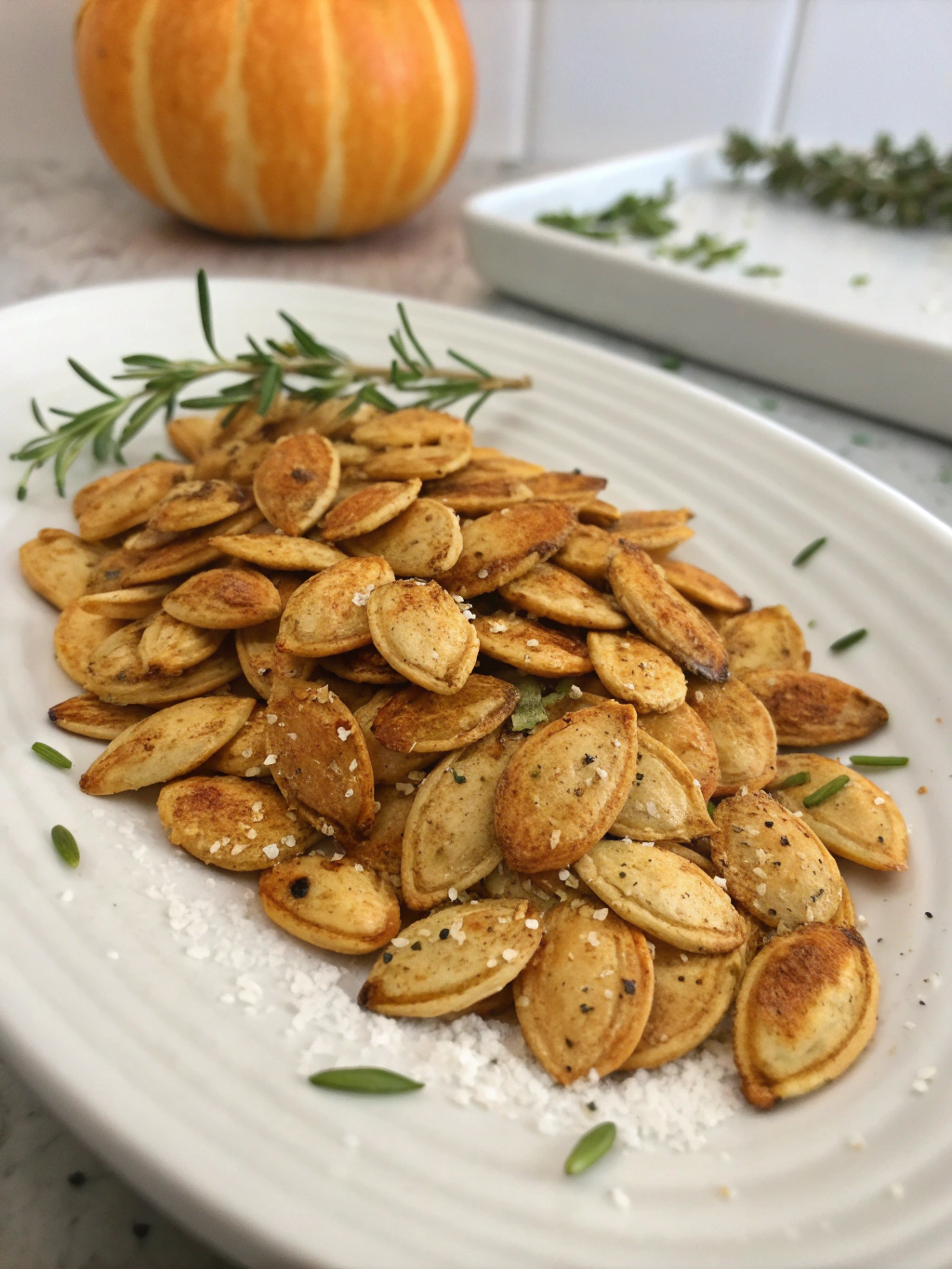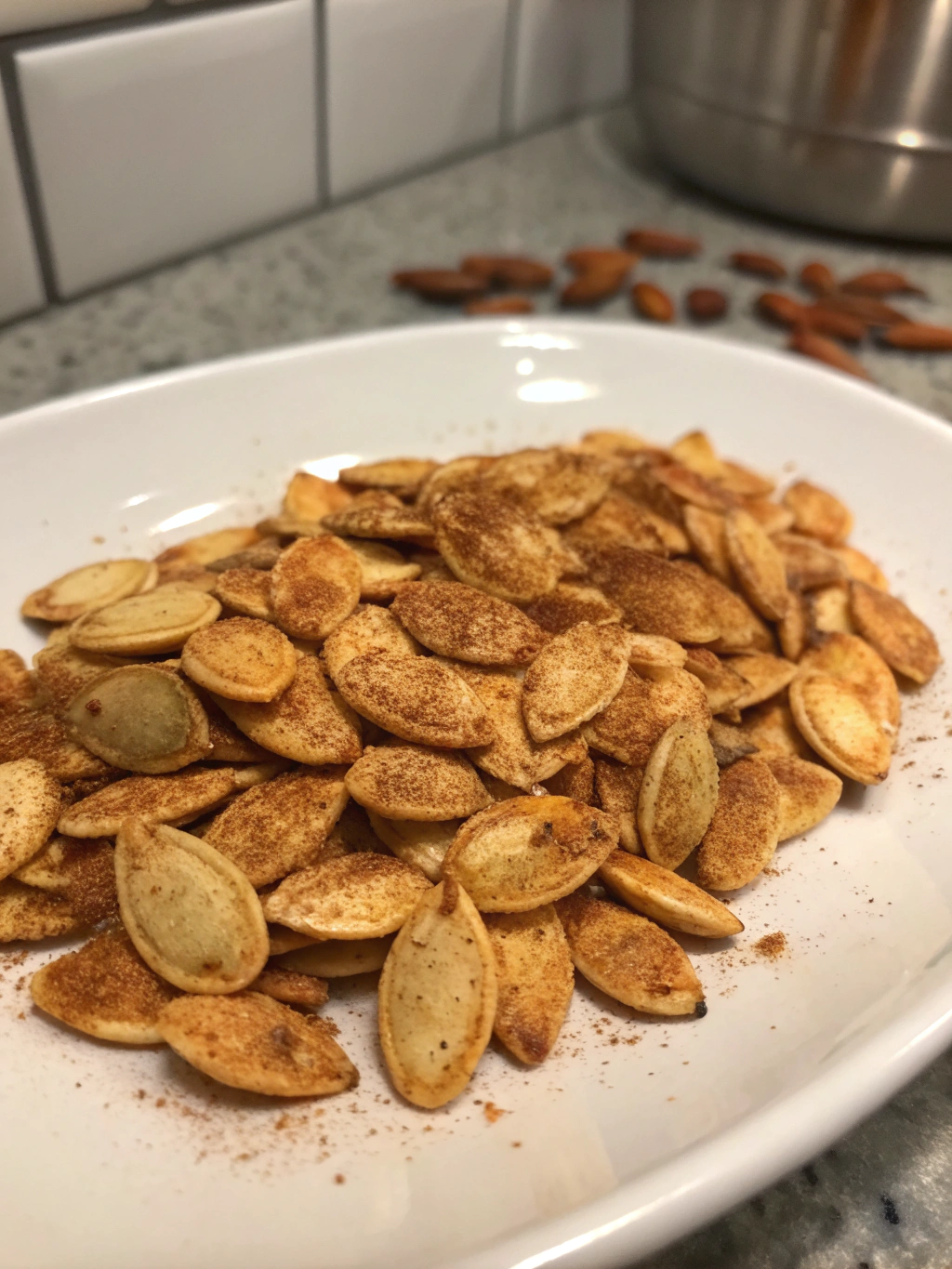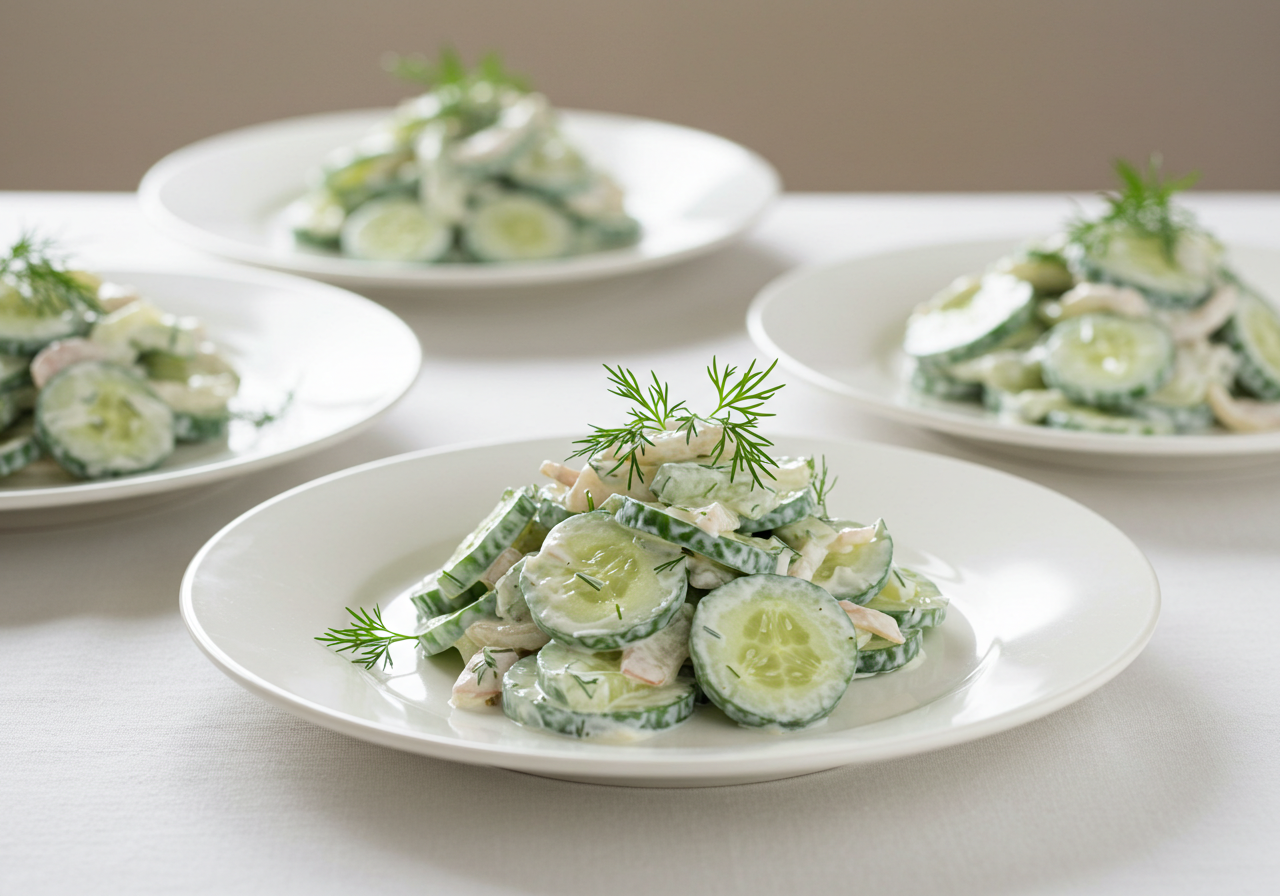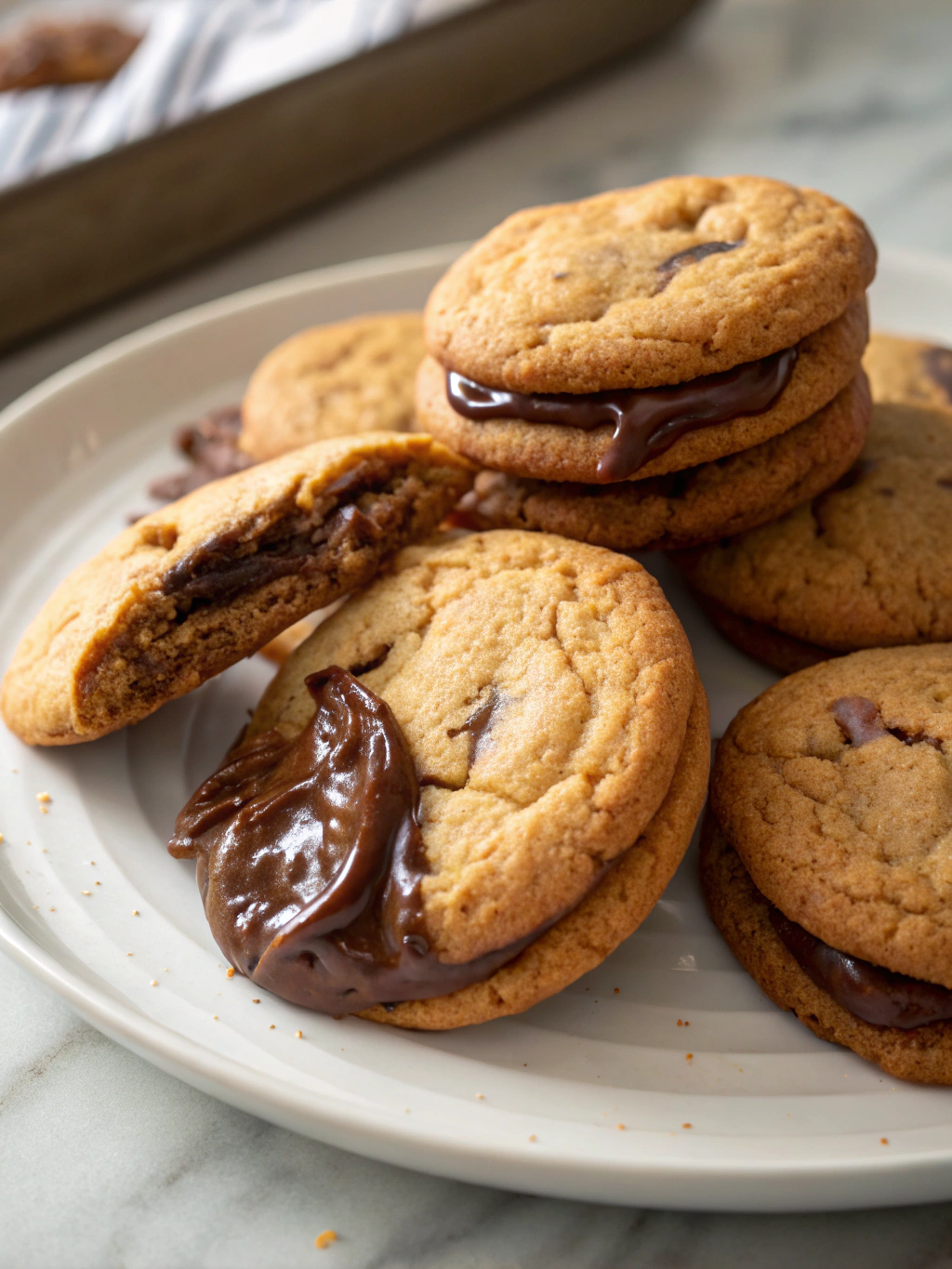Parmesan Crusted Salmon is a dish that perfectly balances gourmet elegance with simplicity. This recipe transforms an everyday salmon fillet into a luxurious meal that can impress dinner guests or serve as a hearty weeknight dinner. The secret lies in the rich, golden crust made with Parmesan cheese, which adds a savory crunch that contrasts beautifully with the tender, flaky salmon. Whether you’re a seasoned chef or a kitchen novice, this dish is both easy to prepare and rewarding to serve.
Why Parmesan Crust Elevates Salmon
The Parmesan crust is the star of this dish, bringing a depth of flavor that elevates the natural taste of salmon. Parmesan cheese, with its nutty and salty profile, complements the rich, fatty essence of the fish. Combined with breadcrumbs, garlic, and herbs, the crust achieves a perfect crispness when baked or broiled. This layer locks in the moisture of the salmon, ensuring a juicy interior while providing a delightful crunch on the outside. The interplay of textures and flavors makes Parmesan Crusted Salmon a standout dish that feels restaurant-quality without the complexity.
Nutritional Benefits of Salmon and Parmesan
Beyond its incredible taste, Parmesan Crusted Salmon is a nutritional powerhouse. Salmon is rich in omega-3 fatty acids, which support heart health, reduce inflammation, and enhance brain function. It is also an excellent source of high-quality protein, vitamins B12 and D, and essential minerals like selenium and potassium. Parmesan cheese adds a dose of calcium, protein, and phosphorus, supporting bone health and muscle function. Together, these ingredients create a dish that not only satisfies your palate but also nourishes your body, making it an ideal choice for health-conscious food lovers.
Enjoy this gourmet delight, and discover how simple ingredients can come together to create a memorable culinary experience!
Ingredients for Parmesan Crusted Salmon
Essential Ingredients for the Dish
To create a delectable Parmesan Crusted Salmon, you’ll need the following key ingredients:
- Salmon fillets: Fresh, skinless salmon fillets are ideal for this recipe, ensuring a tender and flavorful base for the crust.
- Parmesan cheese: Finely grated Parmesan is essential for achieving a golden, crispy crust with rich flavor.
- Breadcrumbs: Panko breadcrumbs work best for their light texture and ability to crisp up perfectly.
- Garlic: Freshly minced garlic adds an aromatic depth to the crust mixture.
- Herbs: Dried or fresh parsley, thyme, or dill enhance the dish’s flavor profile, pairing well with salmon.
- Lemon zest: A touch of zest brightens the flavors and complements the richness of the salmon.
- Olive oil or melted butter: Helps bind the crust ingredients and adds a hint of richness.
- Salt and pepper: To season the fillets and bring out the natural flavors.
Tips for Choosing Fresh Salmon
The quality of salmon plays a crucial role in the success of this dish. Here’s how to select the best salmon:
- Appearance: Choose fillets with vibrant, moist flesh and a consistent color. Avoid dull or discolored pieces.
- Texture: The flesh should be firm to the touch and spring back when pressed lightly.
- Smell: Fresh salmon has a clean, ocean-like aroma. Avoid fish with a strong, unpleasant odor.
- Source: Opt for wild-caught salmon when possible, as it often has a richer flavor compared to farmed salmon.
Best Parmesan Cheese Types for Optimal Flavor
Not all Parmesan cheeses are created equal, and choosing the right type can enhance the dish significantly:
- Parmigiano-Reggiano: This authentic Italian cheese offers a nutty, robust flavor that pairs beautifully with salmon. Look for aged Parmigiano-Reggiano for added depth.
- Pre-grated Parmesan: While convenient, pre-grated options can lack the bold flavor of freshly grated cheese. If using pre-grated Parmesan, ensure it’s high quality and free from additives.
- Fresh Parmesan block: For the best results, purchase a block of Parmesan and grate it yourself. This ensures maximum freshness and flavor.
With these tips and the right ingredients, you’re well on your way to creating a perfectly crusted salmon that’s as impressive as it is delicious.
Preparing the Salmon for Crusting
Cleaning and Deboning Salmon
Properly preparing salmon ensures a smooth cooking process and enhances the dish’s presentation:
- Rinse and pat dry: Gently rinse the salmon fillet under cold water to remove any residue. Pat it dry with paper towels to help the crust adhere better.
- Remove scales (if needed): If the skin is on, check for any remaining scales and scrape them off with a knife held at a slight angle.
- Check for pin bones: Run your fingers along the flesh to locate any pin bones. Use fish tweezers or clean pliers to pull them out gently, pulling in the direction of the bone to avoid tearing the flesh.
Slicing the Salmon into Proper Portions
For even cooking and easy serving, slicing the salmon into individual portions is essential:
- Determine portion size: Aim for fillets about 4 to 6 ounces each, depending on the size of the salmon.
- Use a sharp knife: Cut cleanly through the flesh, ensuring even edges. This helps with uniform cooking and a polished appearance.
- Keep skin intact (optional): If the recipe allows, leaving the skin on can help retain moisture during cooking and provide a crispy layer if pan-seared.
Seasoning the Salmon Base
A well-seasoned base enhances the overall flavor:
- Season lightly: Sprinkle both sides of the fillet with salt and freshly cracked black pepper.
- Add aromatics: Rub a little garlic powder, paprika, or lemon zest onto the salmon for added depth.
- Brush with oil: Lightly coat the salmon with olive oil or melted butter to ensure the crust sticks and the fish stays moist during baking.
Crafting the Perfect Parmesan Crust
Mixing Parmesan with Herbs and Spices
The crust mixture is where the magic happens:
- Combine Parmesan and herbs: In a mixing bowl, combine finely grated Parmesan with herbs such as parsley, thyme, or dill. Fresh herbs provide a more vibrant flavor, while dried herbs work well for convenience.
- Add aromatics: Stir in minced garlic or garlic powder for an aromatic boost.
- Season to taste: Add a pinch of salt, black pepper, and optional red pepper flakes for a hint of spice.
Adding Panko or Breadcrumbs for Texture
Breadcrumbs are essential for creating a crispy crust:
- Choose the right breadcrumbs: Panko breadcrumbs are ideal for their light and airy texture, but regular breadcrumbs can also be used.
- Mix with cheese: Blend the breadcrumbs with the Parmesan mixture to ensure even distribution.
- Enhance with oil or butter: Drizzle olive oil or melted butter over the breadcrumb mixture and toss to coat. This helps achieve a golden, crunchy finish.
Preparing the Crust Topping
To ensure the crust adheres well and bakes perfectly:
- Prepare a paste-like consistency: Add a small amount of Dijon mustard or mayonnaise to the Parmesan mixture if desired. This acts as a binder and adds flavor.
- Spread evenly: Spoon the crust mixture onto the seasoned salmon and press gently to adhere.
- Adjust thickness: Ensure the crust layer is even, about ¼ inch thick, for balanced flavor and texture.
With these steps, your Parmesan Crusted Salmon will be ready for the oven, promising a crisp, flavorful crust and a moist, tender interior.
Cooking Methods for Parmesan Crusted Salmon
Oven-Baked Parmesan Crusted Salmon
Baking is a straightforward and reliable method that ensures even cooking:
- Preheat the oven: Set the oven to 400°F (200°C) for optimal results.
- Prepare the baking dish: Line a baking sheet with parchment paper or lightly grease it to prevent sticking.
- Bake until golden: Place the crusted salmon fillets on the prepared sheet and bake for 12–15 minutes, or until the crust is golden brown and the salmon is just cooked through.
- Optional broil: For extra crispiness, switch to the broiler for the last 1–2 minutes. Watch carefully to avoid burning.
Pan-Seared with a Golden Crust
Pan-searing creates a beautifully golden crust with rich flavor:
- Heat the pan: Use a non-stick skillet or cast iron pan and heat it over medium heat. Add a small amount of olive oil or butter.
- Cook the crust side first: Place the salmon fillet crust-side down in the pan and sear for 2–3 minutes until golden and crispy.
- Finish cooking: Carefully flip the fillet and cook the other side for 3–5 minutes, or until the salmon is cooked through.
Air-Frying for a Healthier Option
Air frying delivers a crispy crust with minimal oil:
- Preheat the air fryer: Set the temperature to 375°F (190°C).
- Prepare the basket: Lightly grease the air fryer basket or line it with parchment paper to prevent sticking.
- Cook the salmon: Place the fillets in a single layer in the basket, crust side up, and air fry for 10–12 minutes. The crust should be golden and crispy, and the salmon cooked to perfection.
Baking Parmesan Crusted Salmon to Perfection
Setting the Right Temperature and Time
The correct temperature and cooking duration are key:
- Ideal temperature: Bake at 400°F (200°C) to achieve a balance between a crispy crust and moist salmon.
- Cooking time: Salmon typically takes 12–15 minutes to cook, depending on the thickness of the fillets. A general rule is 4–6 minutes per ½ inch of thickness.
How to Know When Salmon Is Cooked Properly
To ensure perfectly cooked salmon:
- Visual cues: The salmon should turn opaque and flake easily with a fork. The crust should be golden brown.
- Internal temperature: Use a meat thermometer to check the thickest part of the fillet. It should read 145°F (63°C) for fully cooked salmon, as per FDA guidelines.
- Spring test: Lightly press the salmon with a fork; it should feel firm but slightly springy.
Maintaining Moisture in the Salmon
Avoiding dryness ensures the best flavor and texture:
- Use oil or butter: A light coating of olive oil or butter helps retain moisture.
- Don’t overcook: Keep a close eye on the salmon and remove it from the oven as soon as it reaches the correct temperature. Residual heat will continue to cook the fish.
- Cover lightly: If the crust is browning too quickly, loosely tent the salmon with foil for part of the baking process.
By choosing the right cooking method and following these tips, your Parmesan Crusted Salmon will be perfectly crispy on the outside and tender, moist, and flavorful on the inside.
Pairing Parmesan Crusted Salmon with Side Dishes
Perfect Vegetables to Complement the Dish
Vegetables bring balance and vibrancy to the rich flavors of Parmesan Crusted Salmon:
- Roasted asparagus: A classic pairing with salmon, asparagus adds a tender crunch and a slightly nutty flavor.
- Steamed broccoli: Light and nutrient-rich, broccoli provides a refreshing contrast to the savory crust.
- Sautéed spinach or kale: Greens cooked with garlic and olive oil enhance the dish’s earthy undertones.
- Glazed carrots: Sweet, honey-glazed carrots add a touch of sweetness to balance the saltiness of the Parmesan.
- Zucchini noodles or roasted bell peppers: These low-carb options are both light and flavorful.
Best Starches: Rice, Mashed Potatoes, and More
Starches make a hearty base for your meal, complementing the salmon’s richness:
- Garlic mashed potatoes: Creamy, buttery mashed potatoes pair beautifully with the crispy crust.
- Wild rice or pilaf: The nutty flavor of wild rice adds depth and texture to the dish.
- Quinoa: A high-protein alternative that offers a fluffy yet slightly crunchy texture.
- Polenta: Creamy or baked polenta with herbs makes a versatile and elegant side.
- Crusty bread or rolls: Serve warm bread to mop up any leftover juices and flavors.
Pairing with Wines and Beverages
The right beverage enhances the dining experience:
- White wines: Sauvignon Blanc, Pinot Grigio, or Chardonnay bring crispness and acidity to balance the rich salmon and Parmesan.
- Rosé wine: A dry rosé pairs well with the dish’s savory and nutty elements.
- Non-alcoholic options: Sparkling water with a splash of lemon or a light, citrus-infused iced tea provides a refreshing counterpoint.
- Beer: A light lager or wheat beer works well with the dish’s flavors.
Variations and Customizations
Gluten-Free Parmesan Crusted Salmon
To make this recipe gluten-free:
- Substitute breadcrumbs: Use gluten-free breadcrumbs or crushed rice crackers in place of regular breadcrumbs.
- Check cheese and seasoning: Ensure that the Parmesan and spices used are certified gluten-free.
Keto-Friendly Recipe Modifications
For a low-carb, keto-friendly version:
- Omit breadcrumbs: Replace breadcrumbs with crushed pork rinds, almond flour, or a mix of both for a crunchy crust.
- Use keto-friendly cheese: Parmesan is naturally low in carbs, making it a perfect fit for keto diets.
- Pair with keto sides: Serve with cauliflower mash or roasted Brussels sprouts for a complete keto meal.
Using Different Types of Fish for the Recipe
While salmon is the classic choice, other fish work beautifully with a Parmesan crust:
- Cod or haddock: These mild, flaky white fish are excellent for the recipe. Adjust the cooking time to avoid overcooking.
- Tilapia: A budget-friendly option, tilapia is mild and works well with the bold flavors of the Parmesan crust.
- Halibut: This firmer fish provides a meatier texture and pairs beautifully with the crust.
- Trout: With its slightly richer flavor, trout is a great alternative to salmon.
With these pairings and variations, you can customize Parmesan Crusted Salmon to suit any dietary preference, occasion, or palate. Enjoy experimenting and making the recipe your own!
Conclusion
Summarizing the Appeal of Parmesan Crusted Salmon
Parmesan Crusted Salmon is a dish that brings together gourmet flair and everyday simplicity. With its perfectly crisp, golden crust and tender, flaky interior, it offers a harmony of textures and flavors that feel indulgent yet achievable. Whether served for a special occasion or as a quick weeknight dinner, this recipe is versatile, healthy, and sure to impress. Its combination of rich salmon, nutty Parmesan, and aromatic herbs elevates it to a meal that’s both nourishing and delightful.
Encouraging Readers to Try the Recipe
If you’re looking for a dish that’s as easy to prepare as it is impressive, Parmesan Crusted Salmon is the perfect choice. With its simple preparation and outstanding results, it’s a recipe that even beginners can master. Pair it with your favorite sides, enjoy experimenting with variations, and savor the satisfaction of creating a restaurant-quality meal at home. Why wait? Gather your ingredients and discover the magic of Parmesan Crusted Salmon today!

To enhance your reading experience and expand the culinary possibilities, consider exploring related recipes and tips that complement this Parmesan Crusted Salmon dish. For instance, you might enjoy pairing it with a Crispy Chicken Salad for a light and fresh side or trying a luxurious Lemon Beurre Blanc sauce for added richness. Additionally, if you’re looking for more seafood inspiration, a recipe like this Rockfish Recipe could offer an exciting alternative to salmon. These suggestions not only provide variety but also ensure you get the most out of your cooking adventures!
FAQs About Parmesan Crusted Salmon
Can I Use Pre-Grated Parmesan?
Yes, you can use pre-grated Parmesan for convenience, but freshly grated Parmesan is highly recommended for its superior flavor and texture. Pre-grated options may contain anti-caking agents that can slightly affect the crust’s consistency. If using pre-grated cheese, opt for a high-quality brand for the best results.
How Do I Prevent the Crust from Falling Off?
To ensure the crust adheres properly:
- Pat the salmon dry: Remove excess moisture from the fillets to help the crust stick better.
- Apply a binding layer: Spread a thin layer of Dijon mustard, mayonnaise, or olive oil on the salmon before adding the crust mixture.
- Press firmly: Gently press the crust mixture onto the fillets to secure it in place. Avoid over-handling the salmon during cooking.
Is It Safe to Freeze Cooked Salmon with the Crust?
Yes, you can freeze cooked Parmesan Crusted Salmon, but the texture of the crust may soften upon reheating. To freeze:
- Cool completely: Allow the salmon to cool before wrapping it tightly in aluminum foil or plastic wrap.
- Use an airtight container: Place the wrapped fillets in a freezer-safe container or bag.
- Reheat carefully: Thaw in the refrigerator overnight, then reheat in an oven or air fryer to restore some of the crust’s crispiness.
Enjoy the convenience of making this delicious dish ahead of time and savoring it later without compromising its delightful flavors!

